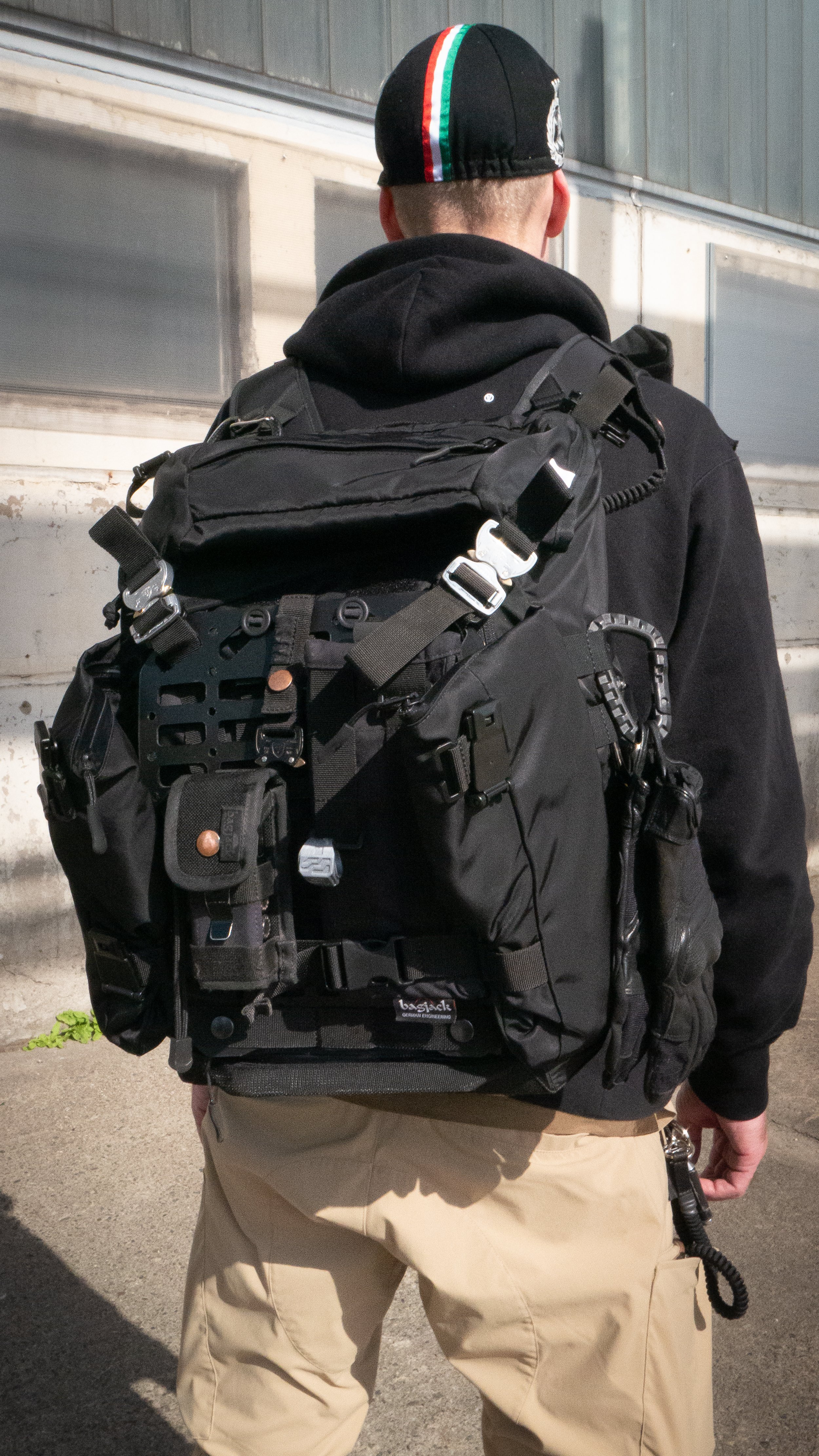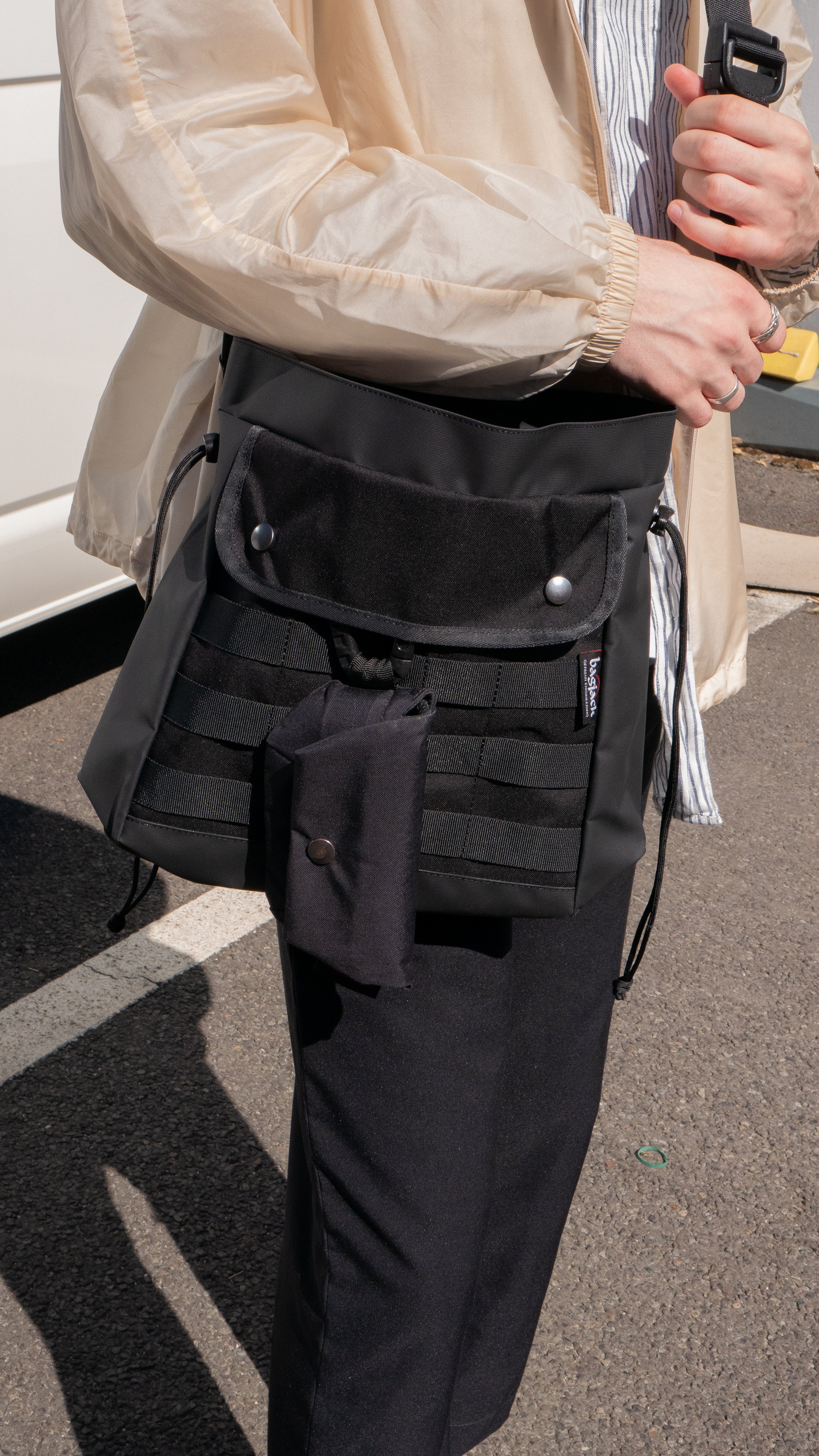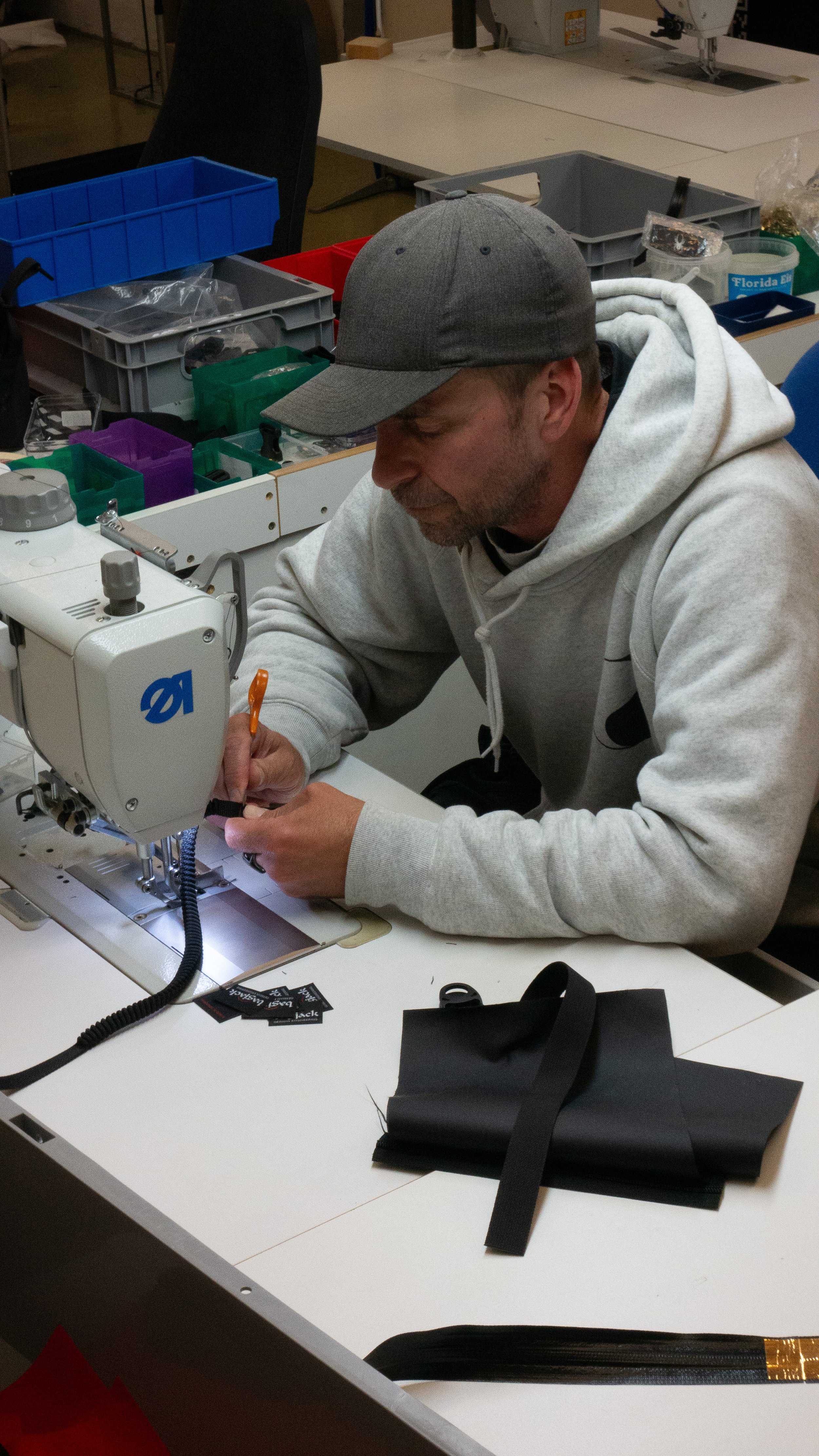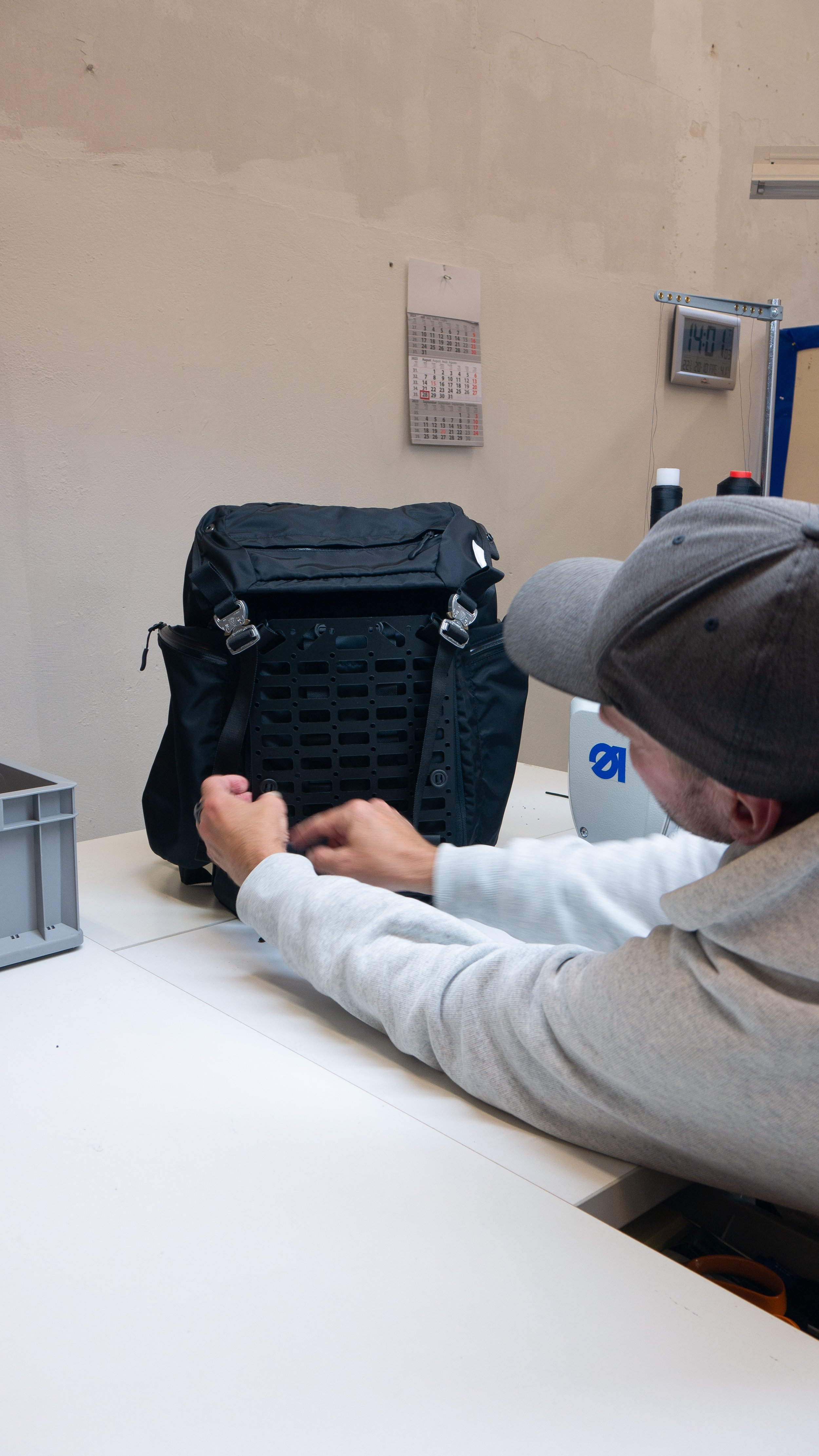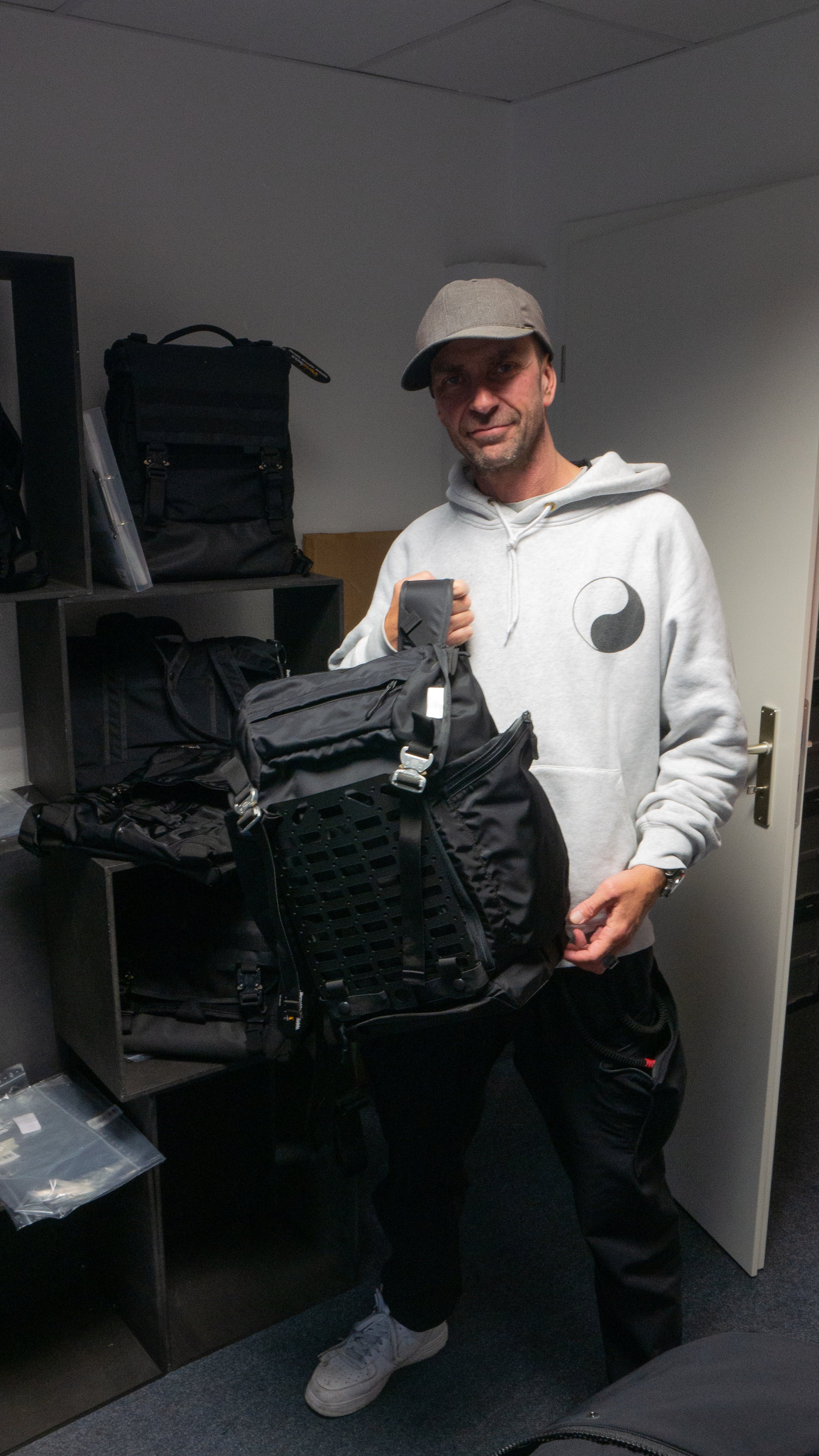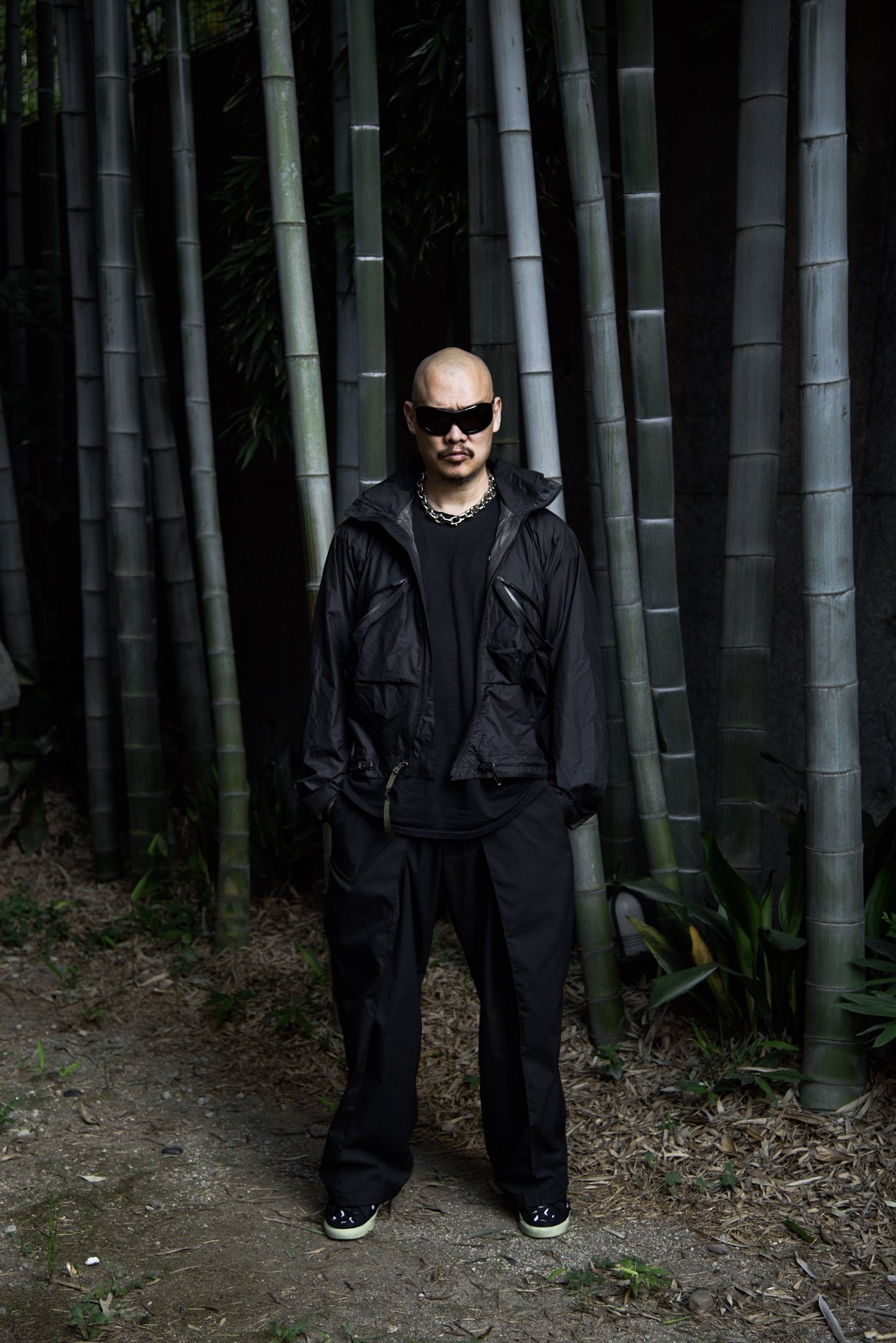The Bagjack Story: Protagonists of a Functional Legacy

Berlin is a melting pot, much like Tokyo. A birthplace of creative prowess, the city exudes an industrial essence unlike any other. It’s architecture, it’s weather, it’s fashion - it is for many a brutalist haven. Many look towards it as the Mecca of functional fashion, and because the city and style resonate with each other almost in a symbiotic way, it is no wonder that many of the greatest functional brands in the world are created there. One of which is the almighty Bagjack.
In the vibrant tapestry of fashion, where we require more today than ever for our fashion to serve a purpose, Bagjack stands as a beacon of innovation and style. Unlike many newcomers in this scene though, Bagjack is a brand that did not rise from fame amidst the rise of gorpcore, tech wear, or any alternative subgenera of the aforementioned fashion cults. Instead, Bagjack stands as a relic from the future. Steeped in history but far ahead of its time, this pioneer led the cavalry charge into a braver, bolder, and more functional-first fashion landscape.
Specialising in incredibly detailed and utilitarian bags and accessories, Bagjack was born in the bustling streets of Berlin in 1997. This iconic brand emerged not just as a purveyor of bags but as a harbinger of a new era in accessory design. With a rich history drenched in collaboration, craftsmanship, and a relentless pursuit of excellence, Bagjack has etched its name in the history books of fashion as an elite brand. Revered for its encyclopedic-level understanding of the bag world, this brand cuts no corners when it comes to both quality and capabilities.
At its inception, Bagjack was more than just a brand; it was and is a manifesto — a declaration of defiance against the mundane, the ordinary. Founder Peter Brunsberg envisioned a world where bags transcended their utilitarian roots, becoming symbols of individuality and expression. From the cobblestone streets of Berlin to the bustling fashion capitals of the world, Bagjack's creations spoke a language of rebellion — a sartorial revolution that challenged the status quo and redefined the very essence of bags. Although now we look at bags and expect them to have a certain level of functionality, before, this was rarely seen - until Bagjack.
Central to Bagjack's meteoric rise has been its penchant for collaboration, forging collaborative projects with some of the most illustrious names in fashion and design. Among these partnerships, none shine brighter than their long-lasting alliance with ACRONYM. This trailblazer in technical apparel needs no introduction. Together, Bagjack and ACRONYM birthed creations that truly blurred the boundaries between form and function, pioneering new materials, and pushing the envelope of bag design and what it meant when unlocking the powers of their creation; like having a ‘third arm’. Their collaboration not only elevated Bagjack to new heights of acclaim but also solidified their reputation as pioneers in the industry.
But beyond the glitz and glamour of high-profile collaborations lies the true essence of Bagjack—their unwavering commitment to quality. Crafted with precision and passion, every Bagjack bag is a testament to the brand's dedication to excellence. From the finest materials to the most intricate stitching, each creation is imbued with a sense of craftsmanship that transcends mere accessories. It is this dedication that earns them a legion of devoted followers who swear by the durability and reliability of their products. They don’t follow trends nor do they sugarcoat anything, they simply are Bagjack - and this is more than enough.
As the brand continues to chart new territories and redefine the very essence of bags, we caught up with them to let them tell their vast story. Join us as we talk to the protagonists of a functional legacy like no other. Let’s go.
Thanks so much for taking the time to talk to us! Can you please start off by introducing yourself to our network and tell us a little bit about what you do?
Hello, my name is Peter, and I'm a native of Berlin. In 1997, I founded Bagjack, wheremy passion for designing and crafting highly functional, fashionable bags led to the creation of what many consider to be techwear. I own a factory in Berlin where all our products are designed and manufactured.
When you first started out, what was your initial inspiration to start making Bags?
In the early '90s, following the fall of the Berlin Wall, I worked on a career as one of Berlin's pioneering bicycle couriers. It was in 1993 when Berlin hosted the first World Championship of Bicycle Couriers. During this event, couriers from New York City introduced us to their messenger bags, which were highly more stylish than what we had at that time in Germany.
They served as the initial spark for our own bag designs. The internet and online retail as we know them today did not exist back then. That’s why we had to craft the items we found cool and desired but couldn't simply purchase, this was laying the foundation for our journey into bag design and production.
How would you describe your brand to anyone that might have never seen or heard about you?
Bagjack is a brand that always comes up with new stuff. We're constantly on the lookout for fresh materials, handy features, and creative designs. Although we do not introduce new collections every season, our products always remain timelessly current.
Our most popular products often go through an evolutionary process. If you had the chance to see our bags in person, just think about how we sew in our zippers, our strap system, and how we use AustriAlpin buckles that have been originally used in parachuting and military gear. These are just three examples of things we've utilised for our design language.
We create timeless products for design, art, and tech enthusiasts. For people who love to explore new things and appreciate the subtle eye-catching items that don't fit neatly into a predefined category.
Being a Berlin based brand, how has the city inspired the brand either aesthetically or functionally?
In the early 90s, Berlin was like a boiling pot after the fall of the Wall. It was literally a fresh start, everything was being redesigned, and unclear ownership situations created countless open spaces. These spaces were filled by creative individuals and those who wanted to party. This atmosphere was exiting and motivating, and attracted hundreds of interesting people. The diverse influences of the subcultures during that time had a highly inspiring effect on me. As a bicycle courier at that time and place, I could inhale this spirit every day. So it was just natural that being in the need for functional equipment and wanting to look stylish in the urban environment leaded to creating bagjack and is still an essential part of its DNA.
Was creating your own brand always the plan or did you imagine yourself doing something else?
No, I didn't have a master plan. Before the wall fell, I started studying at a prestigious ballet school that expelled me after the Berlin Wall fell. The school had no longer the funds it needed and had to part ways with many students to make room for private students. This circumstance plunged me into a situation of disorientation. A news report on television was about the first bicycle courier service in Berlin and gave me the idea to apply. So in December 1990, with lots of snow and ice on the roads, I started working as a bicycle courier.
But even before I started I did knew only one thing, the time as a bicycle courier will physically end at some point. So I did and tried many different things during that time. But in the end, the DIY messenger bag idea haunted me more than anything. In 1997 I finally decided to found Bagjack and to move out of my living room into an old Berlin Kreuzberg loft. There I had the possibilities to raise the production to a professional level.
Bagjack is a very popular brand here in Japan. When did you notice that this was a big market for you?
The realisation that Japan held great potential for Bagjack came in 2003 when I received a request from my current business partner and dear friend, Turbo-san. Back then, Japan felt like a distant and unfamiliar place to me, so I was genuinely surprised that someone from Japan had shown interest in our products.
A year later, I received an invitation to a courier championship in Kyoto, which marked my first visit to Japan. It was during this trip that I met Turbo-san, and I quickly discovered that Germans and Japanese share a deep appreciation for detail and perfection. This common ground extended to our mutual love for technology, functionality, and a keen aesthetic sense for form and design.
These insights led me to believe that we had found a market here that not only recognises our work but also appreciates it. Since then we had many beautiful collaborations with many different Japanese stores and I couldn’t be happier about sharing what we love together.
Why do you think it particularly resonates with the Japanese audience so much?
I think the ability to customise our designs with the visions and ideas of our very creative store partners and to implement them at a high level of quality is certainly one point that has influenced our successful development here in Japan. We simply love the same design language.
You recently spent some time in Tokyo, and we heard you visit the city as often as once a year. What makes the city and the people special to you?
Indeed, I've had the privilege of visiting Tokyo and other places in Japan regularly for the past 20 years. I find Japanese culture incredibly inspiring with it’s fusion of tradition and modernity. It starts with architecture, which strikes a perfect balance between functionality and aesthetics. It's an art of staging things and celebrating them in a kind of ceremony.
Another thing that captivates me in Tokyo is cycling. There's a magical moment when I ride with music in my ears, temporarily becoming one with the metropolis. Tokyo, with its unique blend of culture, architecture, and the bustling energy of its streets, has left an indelible mark on me, and it's a place I look forward to returning to year after year.
What are some of your favourite places in Tokyo? Are there any hot spots that you love visiting when you are here?
I just like everything here that has to do with food. I like to sit on a bench in busy places and watch people, while I snack the most delicious foods, I pay attention to what clothes they wear, what bags are used. One of my favourite stores has always been Tokyu Hands with the handcrafted section.
What I also enjoy is visiting the stores that sell our products, I always learn something new about our customers.It's a great opportunity to connect and gain valuable insights into their preferences and needs. Tokyo, with its vibrant food scene and diverse shopping experiences, offers a continuous wellspring of inspiration and discovery.
Congratulations on celebrating 25 years of bagjack! Being around for so long is definitely a milestone. What are some of the best moments you’ve had during your journey?
Thank you very much! Celebrating 25 years in the competitive market of bags and accessories are a true testament to the dedication of my team and me. It's one of the greatest gifts this adventure has granted us. The recognition for the team and the trust placed in us by customers and fans is a significant source of motivation and gives meaning to our work. The most beautiful moments are when you talk to a satisfied customer who enthusiastically share their bagjack bag stories and all the experiences they've had with it.

And what have been the biggest challenges you’ve faced?
In the early years of our label, we faced a significant challenges within the establishment of our own manufacturing facility. Our primary focus was to ensure that our designs remains flexible while simultaneously maintaining high standards in craftsmanship and material quality. This endeavour required a considerable amount of perseverance and determination to find the right suppliers and assemble a team capable of handling the daily tasks.
What is the process of designing the bags to ensure maximum functionality and fit for daily use? What are some of the key components needed?
At Team Bagjack, our design process always starts with the art of asking the right questions. We firmly believe that asking the right questions paves the way for a successful design project. These questions help us create a comprehensive briefing that guides us through the entire design process.
Once we've addressed all questions related to aesthetics and functionality, taking into account the user group, the actual design process kicks off. This process operates within a predefined framework, shaped by existing manufacturing realities and available materials.
Nevertheless, this defined framework provides us with the opportunity to exercise our creativity. What's intriguing is the constant reevaluation of this framework and pushing its boundaries. This can sometimes entail risks, but it can also lead to the creation of truly outstanding outcomes.
In this way, new approaches frequently emerge in our work. We continuously pay heed to user feedback and criticism, and we also actively use our products. This significantly increases the likelihood of developing a product that is both functionally efficient and aesthetically pleasing.
Once our products successfully navigate this initial phase, their evolution begins. This entails refining their manufacturing details to make them more optimal. New features are introduced, while some might be phased out. Some functionalities may not have been initially envisaged, but users, including myself, often discover new ways to utilize the product.
Consequently, when asked about our target customer base, I often respond, "Our customers are explorers. They relish the experience of discovering new aspects and appreciate functional design."
The opportunity for our products to evolve in this manner is the foundation of their exceptional everyday functionality. The modular structure, allowing for individual configuration is the DNA that has earned us this reputation.
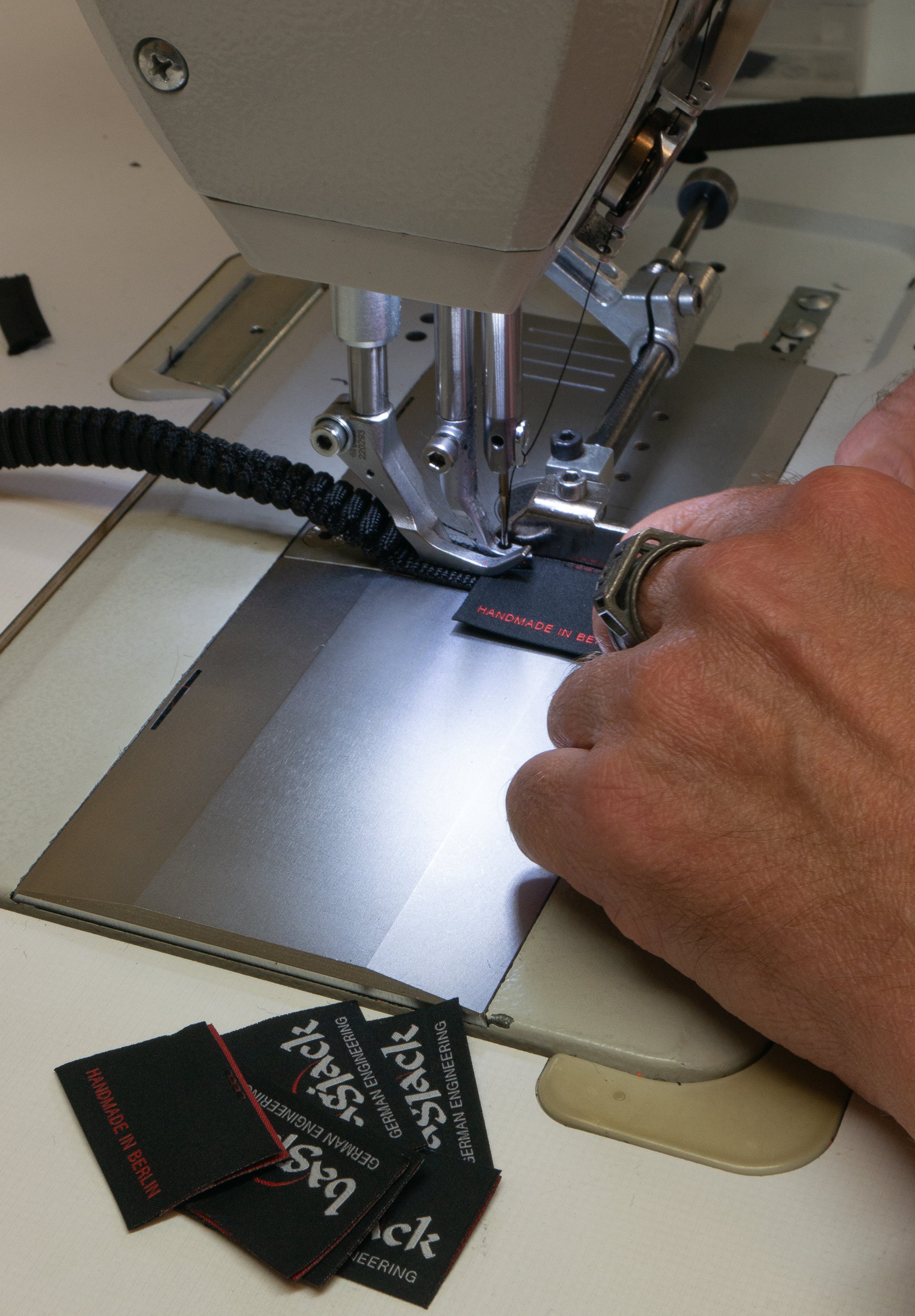
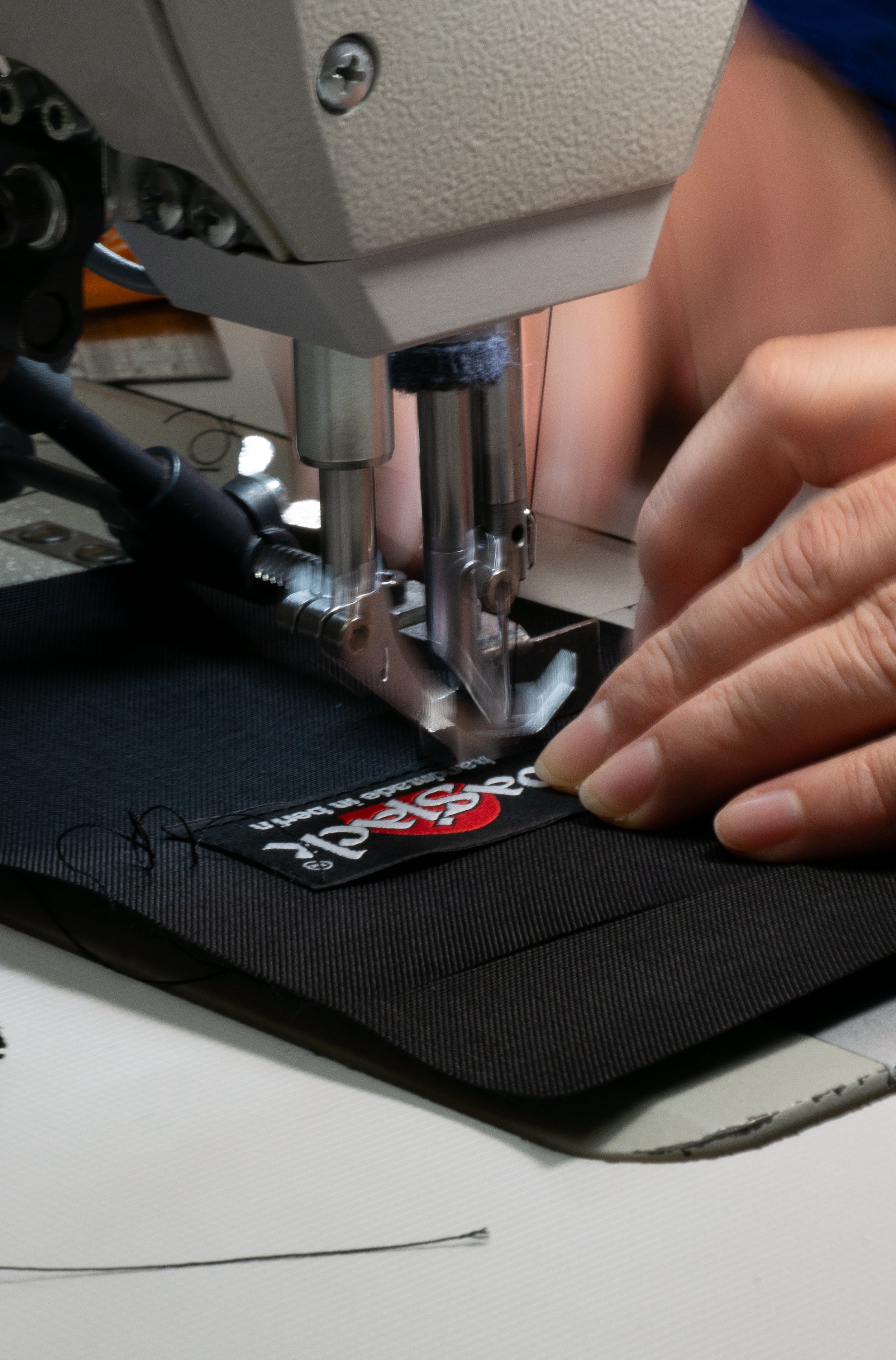
What is your creative process? What does a day in your life look like?
Hahaha, when I reflect on how I started and what my daily routine involves now, it's interesting to note that I'm currently more engaged in the organisational and business aspects than the so-called "creative" realm of the company.
Even though in general organisational and commercial tasks are not necessarily associated with creativity, they demand a lot of creativity in everyday life.
My everyday life is probably not much different from that of many other entrepreneurs. 30% creative work, 50% meetings and 20% working off tasks.
Bagjack is prized for its durability and functionality. What are some of the testing processes the bags go through to ensure quality?
As I mentioned before, we try the products and when they reach the right level for us, they are produced and evolve over time by simply implementing them in the daily task. This is possible because many of our customers give feedback about quality or functionality. We repair the bags and learn about long-term weaknesses. And so we can draw conclusions about the resilience of materials.
Let’s talk about probably the longest collaborator with bagjack, being ACRONYM. How did you come to work with one of the best fashion designers in the industry, Errolson Hugh?
The story is quite amusing. Our first encounter took place in 1999 at the ISPO fair in Munich, a significant event at the time, where we showcased Bagjack on our booth.
Errolson visited our booth and his questions about the products didn't align with what a typical buyer would ask. So, I candidly inquired if he was on an "ideas safari" at the fair. He responded by showing me his jacket with its incredibly cool features. In that moment, it became clear to me that he shared a similar mindset. We delved into the belt system we had developed at Bagjack, and Errolson expressed interest in using it for his Acronym project, notably the Acronym Kit 001, for a bag (3A1) that would accompany the kit. Our connection was immediate, as if we had been collaborating and sharing ideas for an eternity. This, granting him permission to utilize the innovative belt system, felt completely natural.
Three years later, we crossed paths again at Bread'n'Butter in Berlin, where Errolson handed me the catalog for the Acronym KIT 001. As I perused it, I discovered that he and Acronym had thanked both me and Bagjack for allowing them to incorporate our groundbreaking belt system. This reinforced my belief that Errolson is not only remarkably innovative but also tremendously respectful and considerate in acknowledging people and their contributions. This level of courtesy is a rarity in the textile industry.
When we visited our small bagjack factory here in Berlin after the trade show, it became evident that we needed to continue working together. This marked the beginning of a great collaboration that resulted in numerous remarkable products. I believe our partnership is rooted in our shared passion for details. Instead of immediately concluding that something is impossible or can't be done, we explore all options to achieve our ideas and goals. Our profound understanding of the interplay between function, design, and impeccable craftsmanship is, I believe, a rarity in the textile industry. In fact, I can only think of a few brands that consistently strive to incorporate these three pillars into their products.
Are there any future collaborations planned? Or any brands you would love to work with?
Yes, we do have some exciting collaborations in the pipeline. However, at this moment, I prefer not to disclose too much since we're still in the planning stages. Nevertheless, I'm always open to intriguing projects and eager to explore new opportunities.
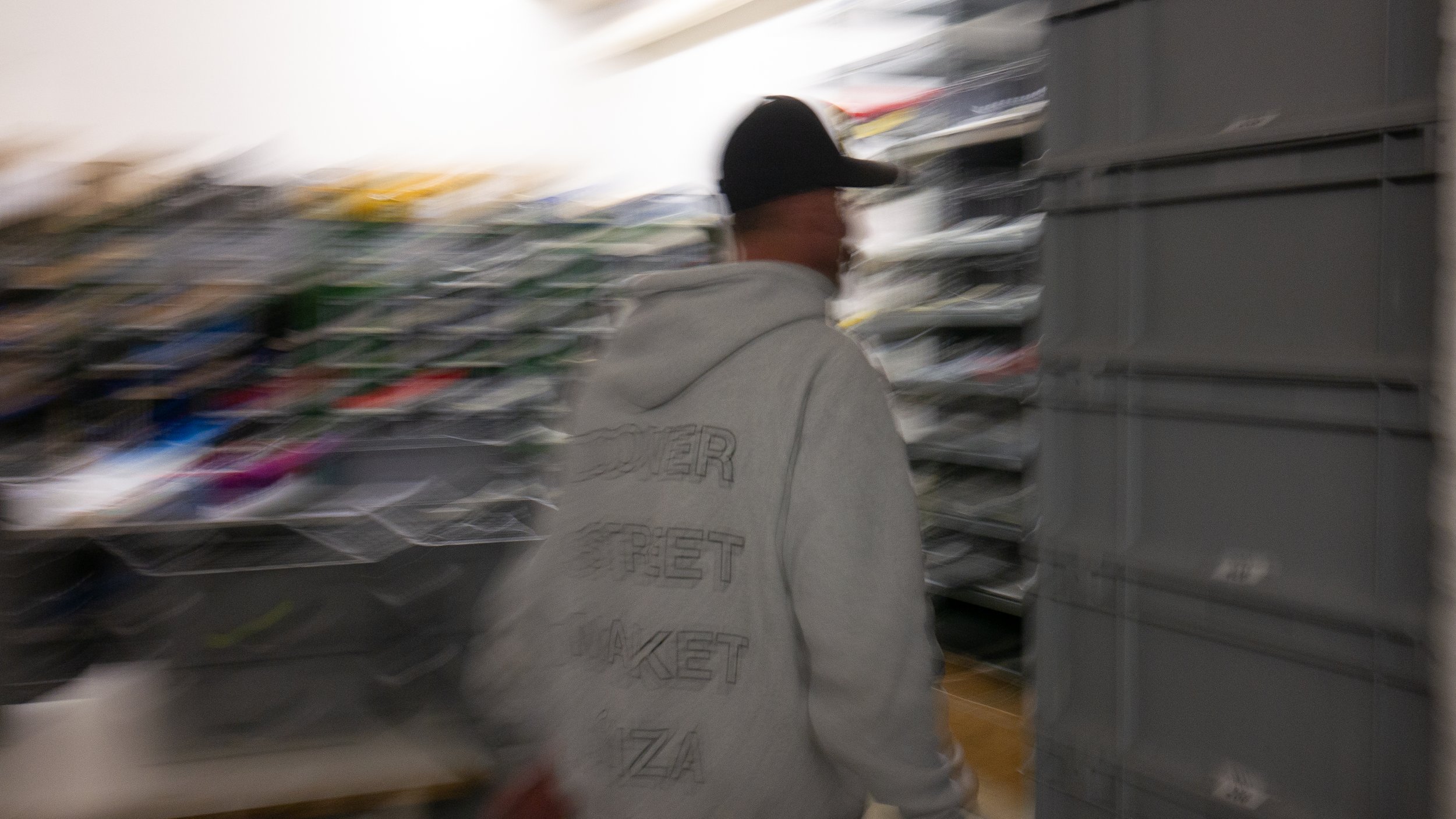
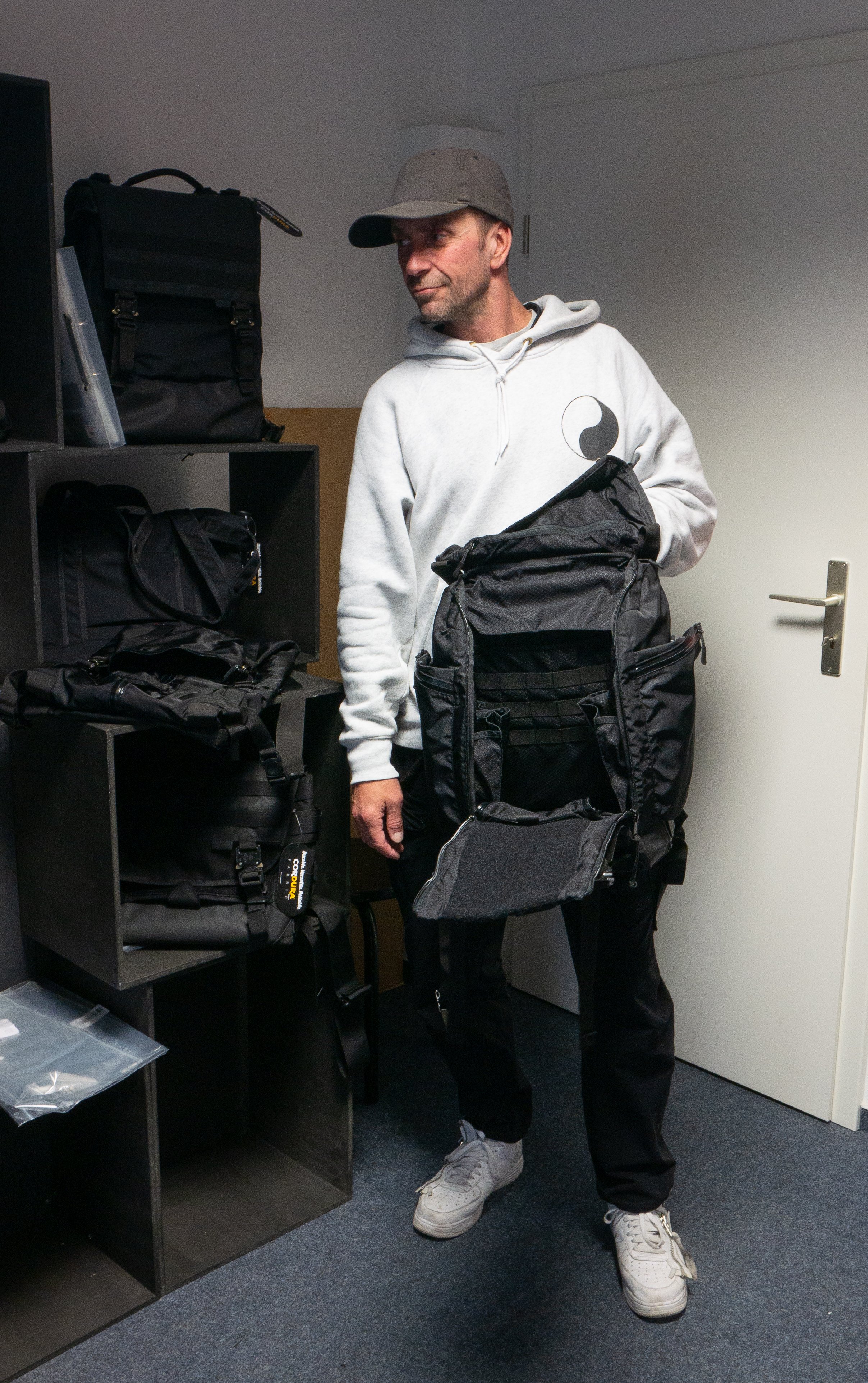
Now, with the first 25 years accomplished, how do you envision the evolution of bagjack in the next 25 years? could you Paint us a vivid picture of where you see the brand heading?
In terms of the future for bagjack, it is indeed a challenging question, as a 25-year timeframe is quite extensive. However, if I were to articulate a vision for our company, it would be the realization of a genuine circular economy for our products. We are already working towards producing our products with as few different materials as possible, particularly minimizing the use of plastics. This approach is intended to ensure that our products are more easily recyclable in the future compared to products made from a wide array of materials. On the manufacturing technology front, we are already actively engaged in processes for highly individualized and fully automated production. The possibilities that these technologies will offer in the future are difficult to imagine today as they continue to evolve. Nevertheless, I foresee that in the future, products will become possible that we haven't even contemplated yet, as they simply cannot be crafted by human hands alone.
Our vision is to create products that not only meet the highest quality standards but also fulfill our environmental responsibility through sustainable material choices and advanced manufacturing processes. The future for bagjack will be marked by innovation and sustainability, and we will continue to push the boundaries of what's possible in the bags and backpack industry.
Introduction by Joe Goodwin
Interview by Tessa Becker











